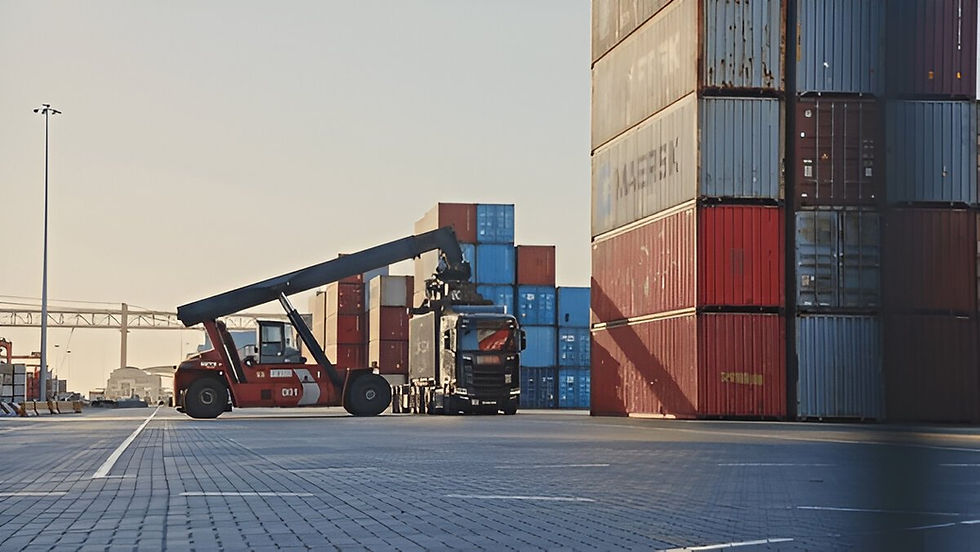What Does an Inland Marine Policy Cover? Explained
- Interns @btwimf.com
- Jul 25
- 3 min read

1) Introduction
If you move tools, equipment, or high-value goods away from your premises, you’ve likely
wondered what an inland marine policy covers and if your standard property insurance is sufficient. Spoiler: it usually isn't. Inland marine policy was created to protect mobile property, goods in transit, and specialty equipment—the gaps that most property policies leave open.
2) What does an inland marine policy cover
At its core, an inland marine policy covers property that is movable, in transit, or temporarily stored off-site. Think of it as property that’s off your premises, on the road, or at someone else's location. Understanding what an inland marine policy covers helps small and medium-sized enterprises and logistics managers protect revenue-critical assets wherever they go.
3) Typical coverages with real-world examples
Property in transit (owned goods or third-party cargo), for example, a distributor shipping electronics between warehouses.
Contractor’s equipment and tools, such as cranes, excavators, and power tools moving from site to site.
Installation floaters cover materials you own (like HVAC units, glass, and server racks) from the time they leave your warehouse until they are installed and accepted by the client.
Bailee’s customer goods include dry cleaners, repair shops, and data recovery firms—if you're responsible for clients' property, this explains what an inland marine policy covers for your liability.
Fine art and collectibles in transit or on exhibition include those held by museums, galleries, or corporate art programs.
Mobile medical and tech equipment covers imaging devices, diagnostic kits, film production gear, survey drones, etc.
Builder’s risk, sometimes written separately, refers to buildings or structures under construction, including materials on-site or in transit.
4) Key exclusions you should know
Even when you understand what an inland marine policy covers, you must recognize the exclusions:
Wear and tear, mechanical breakdown, and inherent vice.
Employee dishonesty, which is usually handled by crime or fidelity policies.
Autos, aircraft, and watercraft, which are covered elsewhere.
Real property at fixed locations that is already insured under a property policy.
Cyber losses and data corruption, which are often excluded unless explicitly added.
5) Limits, deductibles, and valuation how payouts are calculated
Policies can be written on actual cash value or replacement cost. Choose limits that reflect maximum values in transit or at risk off-site, rather than just average values. A quick audit of who moves what, where, and how often will reveal if your current limits really match the risk.
6) Recent Sceneario

About 70% of inland marine claims for small and medium-sized enterprises come from theft, accidental damage, or transit losses.
Contractor’s equipment and installation floaters are among the most commonly purchased inland marine policies by small and mid-sized businesses.
Businesses that regularly transport high-value goods, such as electronics, medical devices, and fine art, experience significantly higher average claim severities compared to fixed-location risks.
7) Quick Summary
Area | What does an inland marine policy cover? |
Transit exposures | Owned goods or customers’ goods on the move |
Mobile equipment | Contractors’ tools, cranes, diagnostic & filming gear |
Third‑party property in your care | Bailee’s coverage for repairers, cleaners, warehouses |
Project materials | Installation floaters, some builder’s risk scenarios |
Key exclusions | Wear & tear, employee dishonesty, cyber, vehicles/aircraft |
If your business relies on property that moves, knowing what an inland marine policy covers can make the difference between a fully paid claim and an unexpected expense. Map your movable assets, track where they travel, and set limits that reflect the highest risks—not just averages. With the right inland marine policy, you can keep operations strong, projects on schedule, and your customers' property safe.




Comments